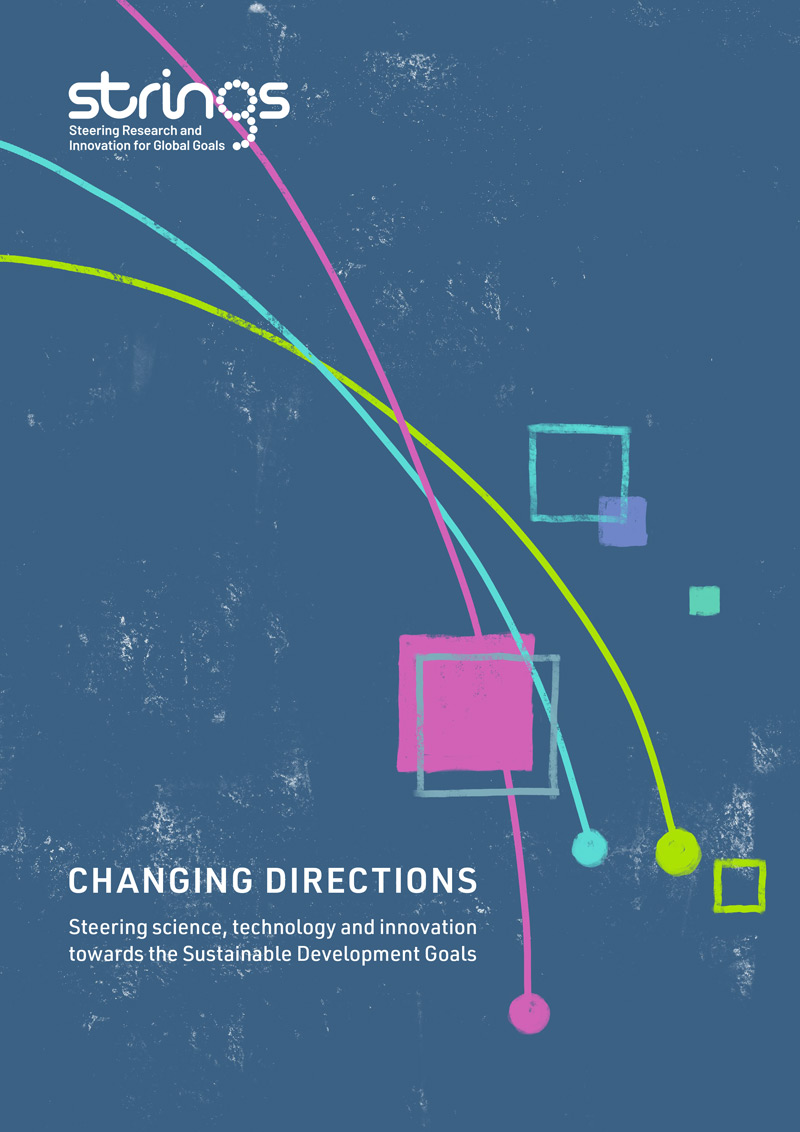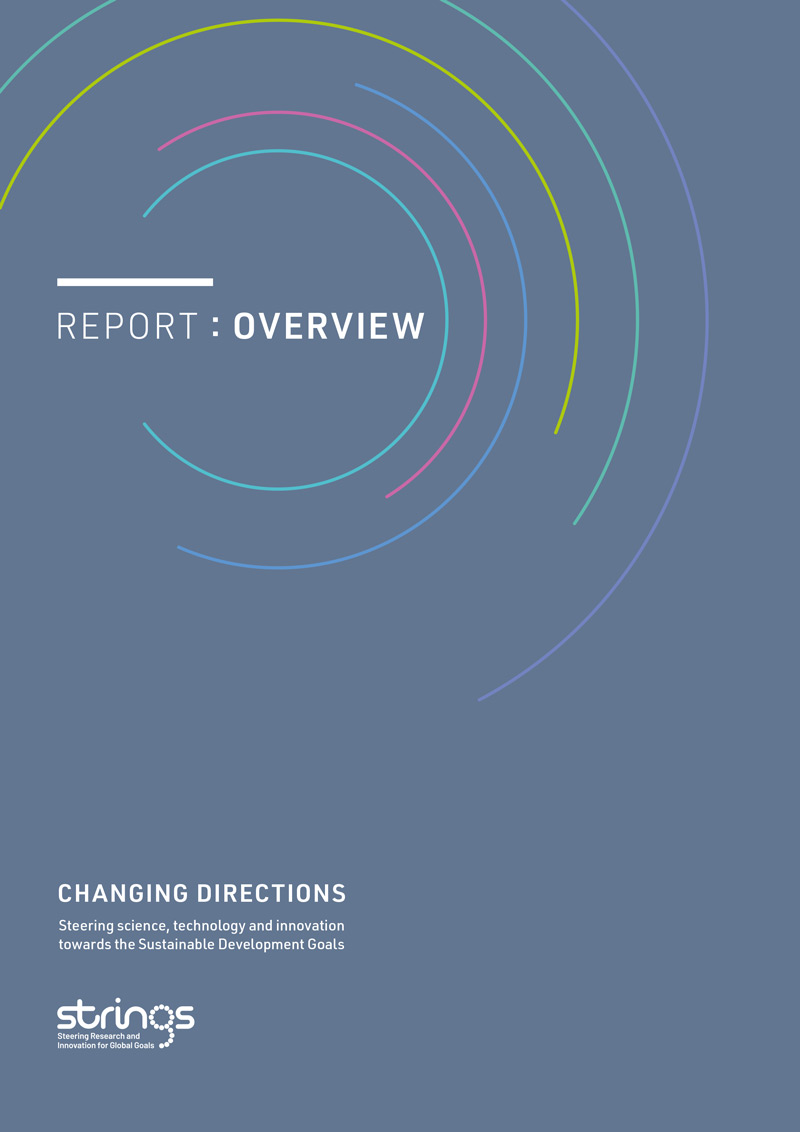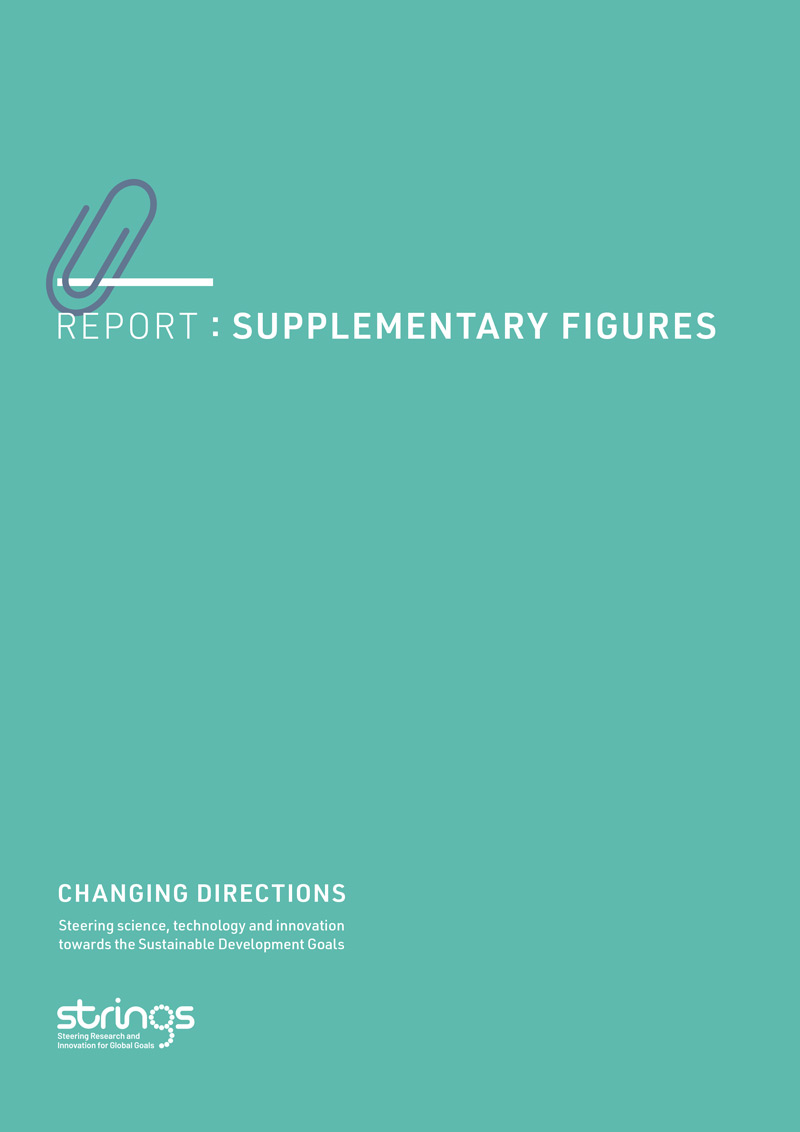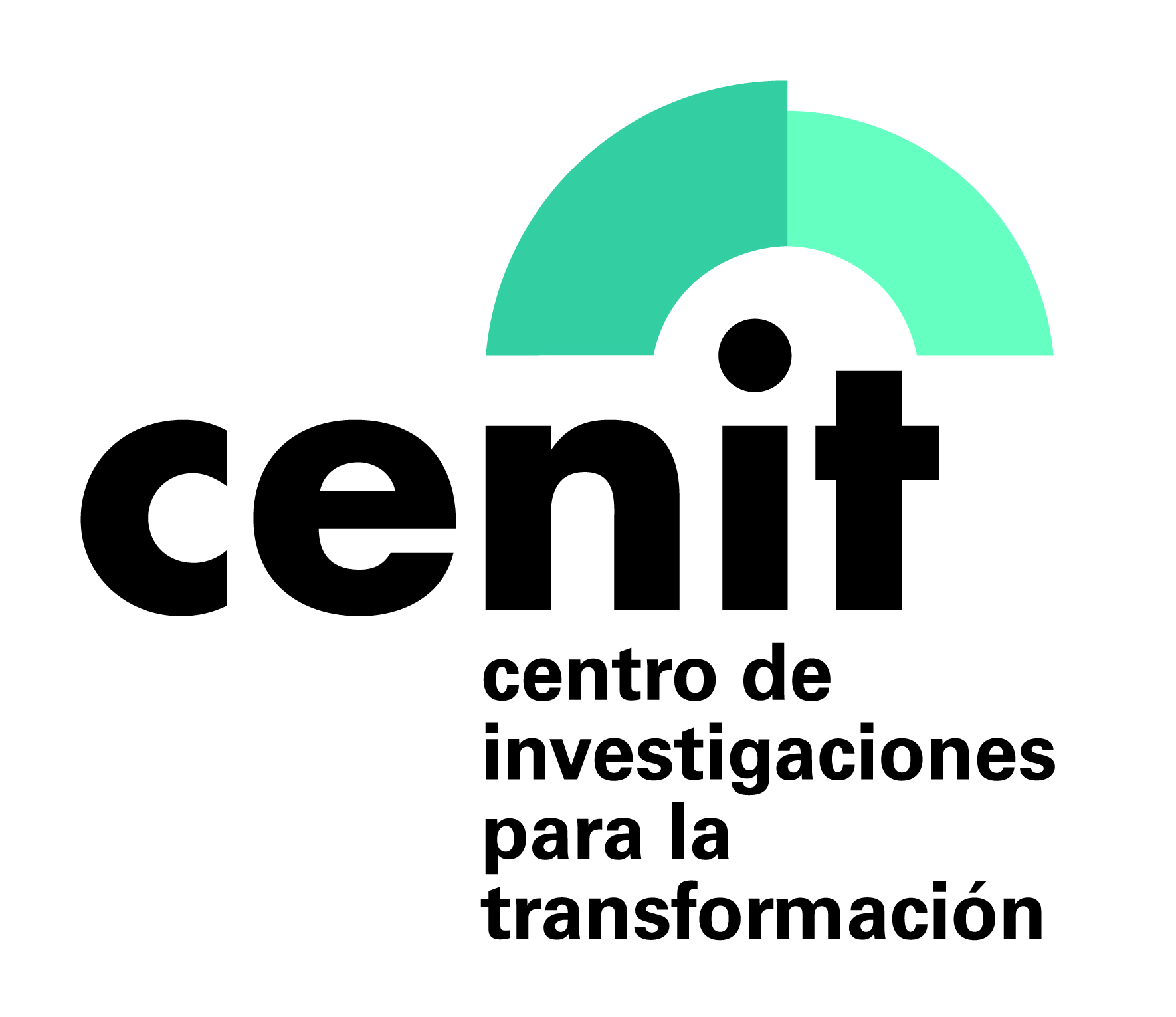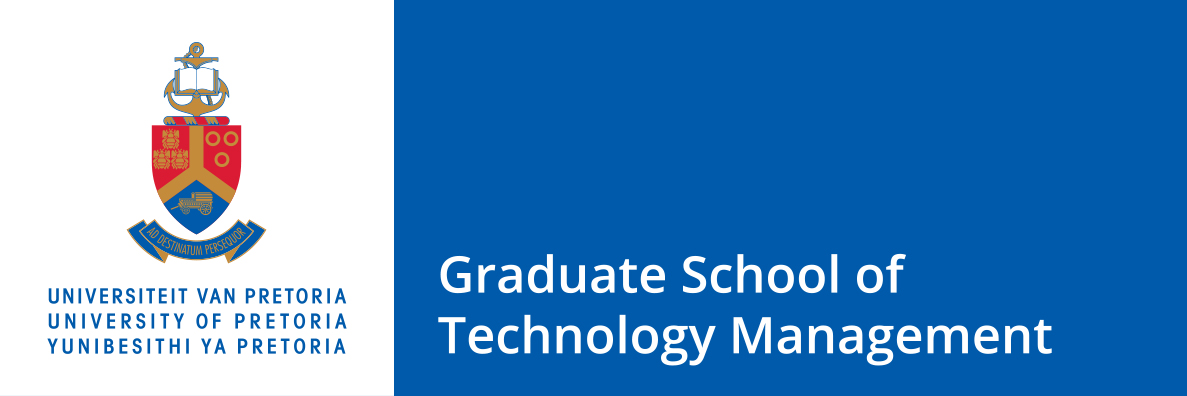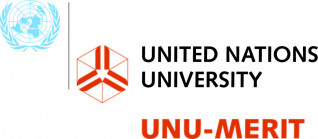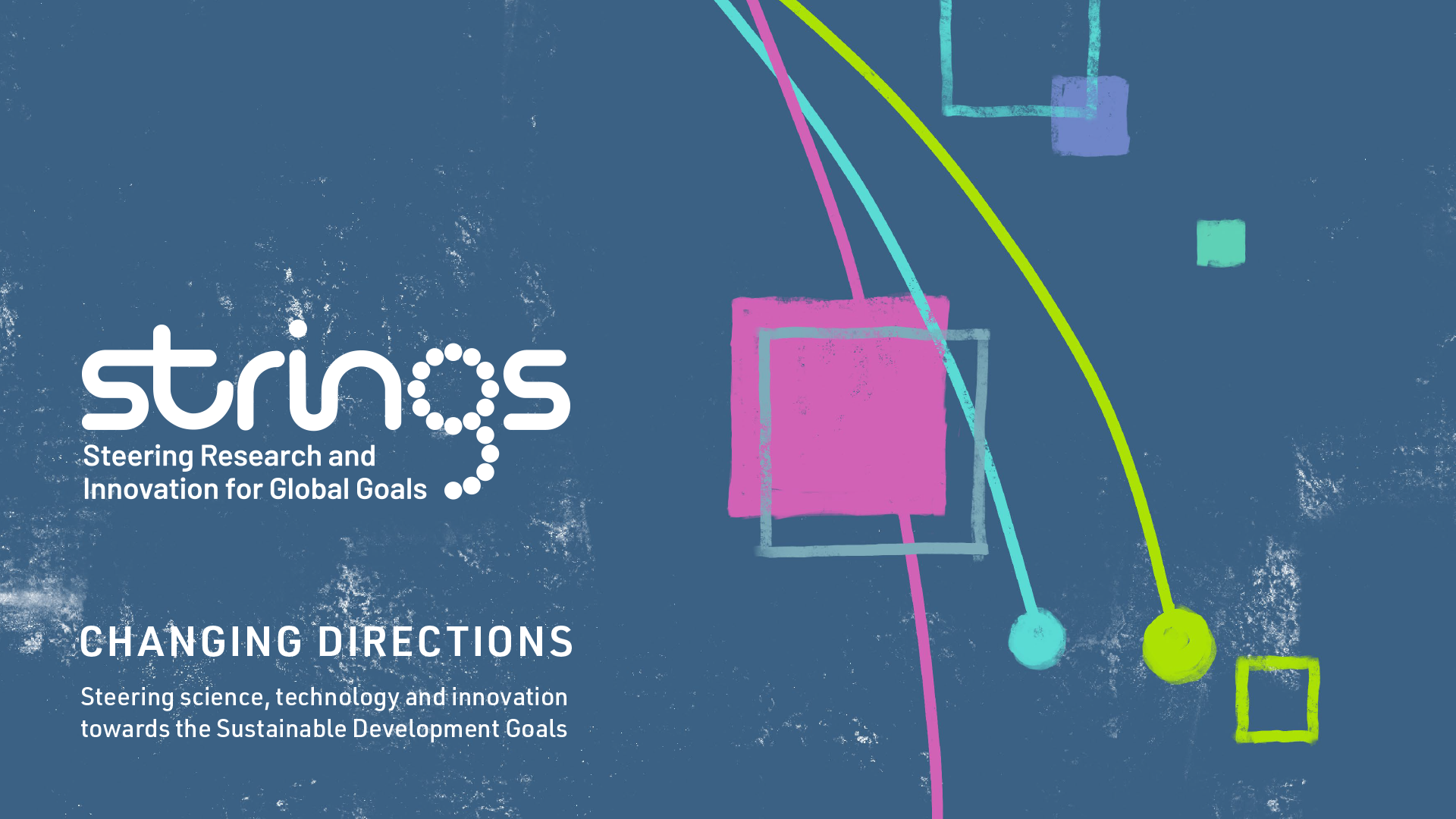
Final report of STRINGS project published
Science, technology and innovation are failing to address the world’s most urgent sustainability challenges, according to a major new report from the STRINGS project.
‘Changing Directions: Steering science, technology and innovation towards the Sustainable Development Goals’ presents the results of the Steering Research and Innovation for Global Goals (STRINGS) project – a major global study into the alignment between science, technology and innovation (STI) and the Sustainable Development Goals (SDGs). It highlights a glaring mismatch between STI and the SDGs; warns that, if this mismatch is not addressed, it will undermine progress on the SDGs; and makes recommendations about how to tackle this imbalance.
DOWNLOAD REPORT BELOW
Changing directions: Steering science, technology and innovation for the Sustainable Development Goals
This short film accompanies the project’s final report, and features members of the project team outlining the key research findings and recommendations, alongside case studies from Kenya, Argentina and India.
We are mapping development pathways for science, technology and innovation…
The STRINGS project is mapping development pathways for science, technology and innovation that best address the UN Sustainable Development Goals.
A consortium of seven leading universities, research centers and the UNDP are working together to better understand the ways in which science, technologyand innovation contribute, or not, to meeting the United Nations Sustainable Development Goals (SDGs) in Low and Middle Income Countries. The project will develop an integrative framework to map the complex relations between research in science, technology and innovation (STI) on the one hand, and the SDGs on the other.
The project
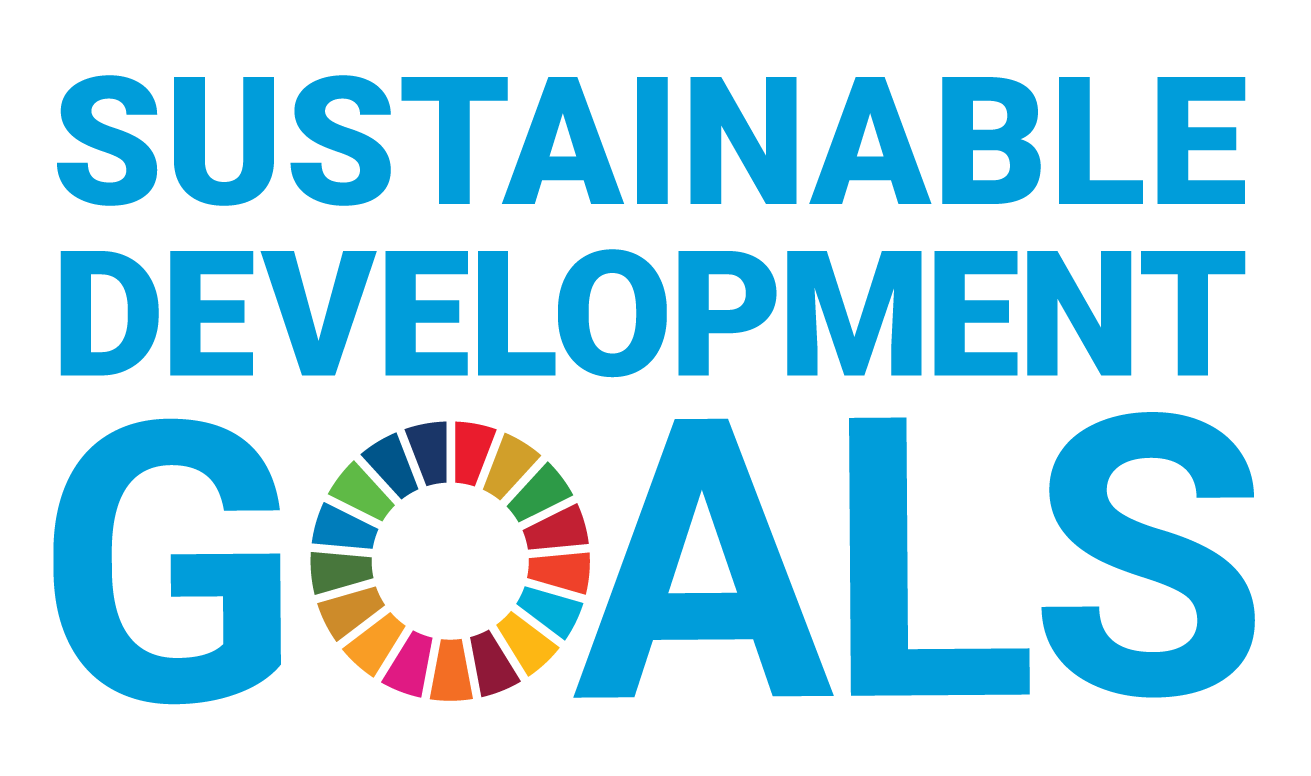
The United Nations Sustainable Development Goals (SDGs) are a comprehensive, internationally agreed-upon set of objectives aiming to vastly improve economic, social and planetary well-being. Science, research, technology and innovation are directed and shaped, they don’t just happen and they play crucial roles in addressing the SDGs. However, due to uncertainties, entrenched interests, distributed priorities in science and innovation, and complex interconnections between the Global Goals, the potential contributions of science, research, technology and innovation remain complex and elusive.
Global and local policy and civil society organisations could benefit from a better understanding of the variety of science, research, technology and innovation pathways that may contribute to SDGs.
Equally important will be the processes through which interested and affected communities can participate in research and innovation processes, to help ensure the most effective outcomes for the most vulnerable people and at the local level.
Methodology
To help steer global efforts, the project will develop an integrative framework to map the complex relations between research in science, technology and innovation (STI) on the one hand, and the SDGs on the other. It will consider the synergies, competing priorities, trade-offs, and the main actors at local, national and global levels.
This will involve:
- multiple forms of engagement with a diverse range of international experts and stakeholders to identify the key areas of research and innovation, and their past and future relations with SDGs;
- systemic data analysis, to map and visualise research and innovation activity through time and across countries, in relation to SDGs;
- case studies in India, Sub Saharan Africa and Latin America to study micro and institutional mechanisms;
- the development of policy pathways to align investments in science, technology and innovation to contribute to SDGs.
A full report will be published at the end of the project. The result will be an unprecedented mapping of how different areas of research in science, technology and innovation relate, positively or negatively, to different SDGs and their complex interlinkages.
The project team will also appraise in particular areas, specific future research and innovation pathways which may better align with the aims of the SDGs.
We expect that the project will help to provide evidence, tools and guidelines that can empower more effective policy actions as well as more inclusive political and technical debates about the possible roles for science, research, technology and innovation in meeting the SDGs by 2030, and the best ways by which this might be achieved across different contexts. The research will provide evidence, tools and guidelines to this end.
Results will be useful for both social scientists interested in understanding and reorienting the role of science, research, technology and innovation to achieve the SDGs, and natural scientists interested in understanding the socio-technical relations that link research on specific topics to potential advances in SDGs.
More broadly, the academic community will learn more about how distributed policy, economic and scientific choices about research topics may be more or less aligned with the SDGs. This is an important aspect of evaluating research that is not only relevant to scientific outputs but also societal goals.
Led by SPRU at the University of Sussex and STEaPP at UCL, a consortium of seven leading universities, research centres and the UNDP are working together to better understand the ways in which science, technology and innovation contribute, or not, to meeting the United Nations Sustainable Development Goals (SDGs) in Low and Middle Income Countries.

